#AmazonDataExtraction
Explore tagged Tumblr posts
Text
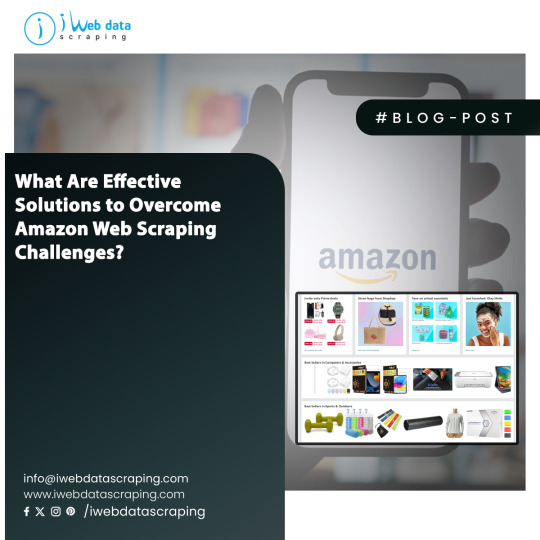
Amazon web scraping challenges involve overcoming IP blocking, CAPTCHA hurdles, dynamic content handling, website structure changes, and legal compliance issues.
Know more: https://www.iwebdatascraping.com/effective-solutions-to-overcome-amazon-web-scraping-challenges.php
#AmazonWebScraping#ScrapeAmazonData#AmazonDataScraper#ExtractAmazonData#AmazonDataCollection#AmazonDataExtraction
0 notes
Text
Scraping Amazon Product Data – Extract Amazon Data
Crawlxpert Provide Amazon Product Data Scraping service – Extract Amazon price, reviews, rating, images and ,brand etc"
Know More >> https://www.crawlxpert.com/e-commerce/uk/scraping-amazon-product-data
#ScrapingAmazonProductData#ExtractAmazonData#AmazonProductDataScrapingServices#ScrapeAmazonProductData#Amazondataextraction
0 notes
Text
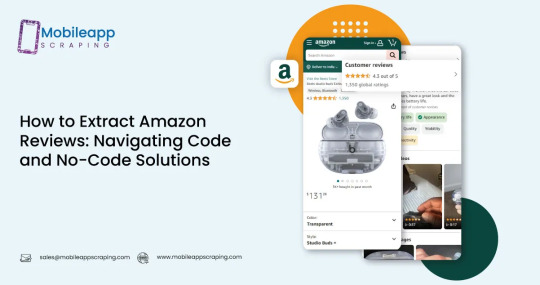
know more: https://medium.com/@huntercalvin37/how-to-extract-amazon-reviews-d48503a238b7
#AmazonReviewDataScraping#AmazonReviewDataScraper#ScrapeAmazonReviewAppsData#AmazonReviewDataExtraction#AmazonReviewAppsDataCollection#ExtractAmazonReviewsData#ScrapeAmazonData#AmazonDataExtraction
0 notes
Text
Amazon Web Scraping: Exploring Its Illegal and Unethical Dimensions
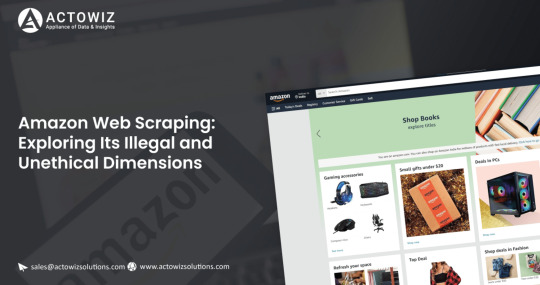
Introduction
In the age of e-commerce dominance, Amazon stands as a retail giant, offering a vast marketplace for both buyers and sellers. As businesses and individuals seek to gain a competitive edge on the platform, some turn to web scraping as a means of extracting valuable data. However, the practice of Amazon web scraping isn't without controversy, raising questions about its legality and ethics.
This article delves into the complex world of Amazon web scraping, shedding light on the illegal and unethical dimensions often accompanying this practice. While web scraping is not inherently illegal, it can cross legal boundaries when used to harvest sensitive data without consent or violating Amazon's terms of service.
We will explore the potential harm caused by unethical scraping, including the infringement of intellectual property rights, the disruption of fair competition, and the compromise of user privacy. Understanding these issues is crucial for individuals and businesses looking to engage in data extraction activities on Amazon's platform.
Join us as we navigate the maze of Amazon web scraping, unveiling the legal and ethical concerns that should be considered before embarking on such endeavors and how they may impact your business and online presence.
The Dark Side of Amazon Scraping: Understanding Illicit and Unethical Practices
Illegal and unethical use cases of Amazon scraping can have far-reaching consequences, not only for those who engage in such activities but also for the broader Amazon ecosystem and its users. It's essential to be aware of these practices to avoid legal troubles and maintain ethical conduct in the digital marketplace. Below, we'll explore these illegal and unethical use cases in more detail:
Price Manipulation
Some individuals or businesses scrape Amazon's product prices with the intent of manipulating prices, either on their listings or on other e-commerce platforms. This unethical practice can disrupt fair competition and deceive consumers. In many jurisdictions, such price-fixing is illegal and can lead to antitrust violations and substantial fines.
Unauthorized Data Extraction
Scraping sensitive data, such as customer information, product details, or sales data, without proper consent is illegal and unethical. It may violate privacy regulations, such as the General Data Protection Regulation (GDPR) and Amazon's terms of service. Unauthorized data extraction compromises the privacy and security of Amazon's users, potentially resulting in legal action and account suspension.
Review Manipulation
Some individuals scrape to manipulate product reviews on Amazon. This includes posting fake reviews, deleting genuine ones, or gaming the review system. Such manipulation is dishonest and can erode trust in the platform. Amazon actively works to combat review manipulation, and those caught engaging in such practices may face account suspension or legal consequences.
Intellectual Property Infringement
Scraping images, product descriptions, or copyrighted content from Amazon listings without proper authorization infringes on intellectual property rights. Amazon sellers invest time and resources in creating their listings, and unauthorized scraping and reusing of this content can lead to copyright infringement lawsuits and legal penalties.
Unfair Competition
Using scraped data to gain an unfair advantage in the marketplace, such as replicating successful products, exploiting competitors' strategies, or unfairly targeting their customer base, is considered unethical. Engaging in such practices can lead to legal disputes, damage your brand's reputation, and potential account suspension.
Web Traffic Hijacking
Some individuals scrape Amazon's product listings to redirect web traffic from Amazon to their website or another platform. This not only violates Amazon's policies but is also unethical as it diverts potential customers from the intended platform. It can lead to account suspension and loss of trust among Amazon's user base.
Fraudulent Activities
Scraping data intending to engage in fraudulent activities, such as identity theft, credit card fraud, or phishing, is illegal and morally wrong. These activities not only harm Amazon's users but also put you at risk of facing criminal charges and significant legal consequences.
Violation of Amazon's Terms of Service
Amazon has specific terms of service that prohibit certain scraping activities. Violating these terms can result in account suspension, termination, or other legal actions initiated by Amazon.
It's essential to recognize that while web scraping itself is not inherently illegal, how it is employed can make it illegal or unethical. Before engaging in any scraping activities related to Amazon, it is crucial to ensure strict compliance with the law, regulations, and Amazon's policies. Additionally, considering the potential harm scraping can cause to other users, businesses, and the platform is a responsible and ethical approach to data collection in the e-commerce ecosystem. Explore the responsible and ethical use of E-commerce Data Scraping Services to gather insights without causing harm to the digital ecosystem.
Efficiency in Data Extraction: Understanding the Speed of Web Scraping
Web scraping is a powerful technique for collecting data from websites. Still, it should be performed responsibly, considering various factors that affect the speed and efficiency of data extraction. Let's delve into these considerations:
Server Workload
One key factor that affects data extraction speed is the server load of the website being scraped. Heavy server loads can slow down the scraping process as the website's servers may need help to respond to a high volume of requests. Responsible web scrapers monitor server load and adjust their scraping rate to avoid overloading the servers, which could lead to IP blocking or other countermeasures.
Navigating Website Limits
Web scraping should respect the boundaries set by the website. This includes understanding and adhering to the website's terms of service, robots.txt file, and any other specific guidelines provided. Ignoring these boundaries can lead to legal issues and ethical concerns.
Optimizing Web Scraping Speed
Rate limiting, or setting the frequency of requests, is a crucial aspect of responsible web scraping. Scrapers should ensure that they only bombard a website with requests quickly. Setting an appropriate delay between requests not only helps avoid overloading the server but also reduces the risk of getting banned.
Honoring the Website's Integrity
Responsible web scrapers should ensure that their activities do not disrupt the normal functioning of the website. Web scraping should be conducted in a way that doesn't interfere with the experience of other users and doesn't cause unnecessary strain on the website's resources.
The Quest for Quality Amidst Quantity
It's essential to balance the quantity of data collected and the quality of that data. Extracting large volumes of data quickly may lead to inaccuracies, incomplete information, or even getting banned. Prioritizing data quality over quantity is a wise approach.
Ethics in Web Scraping Practices
Ethical considerations are paramount in web scraping. Engaging in scraping activities that could harm others, violate privacy, or deceive users is unethical. Responsible web scrapers should ensure that their activities are aligned with ethical principles and fair play.
Exploring Error Rates
Web scraping is only sometimes error-free. Pages may change in structure or content, causing scraping errors. Responsible scrapers should implement error-handling mechanisms to address these issues, such as retries, error logging, and notifications.
Detect and Evade
Websites often employ anti-scraping measures to detect and block scrapers. Responsible web scrapers should employ techniques to avoid detection, such as using rotating user agents, IP rotation, and CAPTCHA solving, while still adhering to ethical and legal boundaries.
Ensuring Data Persistence
If your web scraping is intended to be an ongoing process, it's crucial to maintain a good relationship with the website. This involves continuously monitoring scraping performance, adjusting to any changes on the website, and being prepared to adapt your scraping strategy to ensure long-term access to the data.
The speed of data extraction in web scraping depends on various factors, and responsible web scrapers take these factors into account to ensure their activities are efficient, ethical, and compliant with the rules and boundaries set by the websites they interact with. By doing so, they can achieve their data extraction goals while minimizing the risk of legal issues, ethical concerns, and disruptions to the websites they scrape.
Best Practices for Preventing Copyright Violations in Web Scraping Amazon Data
You are avoiding copyright infringement when web scraping from Amazon or any website is critical to ensure that you operate within the boundaries of copyright law. Amazon, like many websites, has its terms of service and content protection measures. Here are some specific steps to help you avoid copyright infringement while web scraping from Amazon:
Review Amazon's Terms of Service
Start by thoroughly reading Amazon's terms of service, user agreements, and any web scraping guidelines they may provide. Amazon's terms may specify which activities are allowed and which are prohibited.
Understand Amazon's Robots.txt File
Check Amazon's robots.txt file, which can be found at the root of their website (https://www.amazon.com/robots.txt). The robots.txt file may provide guidelines on which parts of the site are off-limits to web crawlers and scrapers. Adhere to these guidelines.
Use Amazon's API (if available)
Whenever possible, use Amazon's Application Programming Interface (API) to access their data. Amazon provides APIs for various services, and using them is often more compliant with their terms of service.
Scrape Only Publicly Accessible Data
Focus on scraping publicly accessible data that is not protected by copyright. Product information, prices, and availability are typically not copyrighted, but be cautious with descriptions and images, as they may be protected.
Respect Copyrighted Content
Avoid scraping and using copyrighted materials like product images, descriptions, and user-generated content without proper authorization or adherence to fair use principles. Seek permission or use these materials in a manner consistent with copyright law.
Attribute Sources
When displaying or sharing scraped data from Amazon, provide proper attribution and source information to acknowledge Amazon as the original content provider. This practice demonstrates good faith and respect for copyright.
Avoid Republishing Entire Content
Refrain from republishing entire product listings or substantial portions of Amazon's copyrighted content without authorization. Instead, summarize or quote selectively and link back to the source.
Use a Human-Like Scraping Pattern
Employ scraping techniques that mimic human browsing behavior, such as adding delays between requests, randomizing user agents, and avoiding aggressive or rapid scraping. This can help prevent being detected as a malicious bot.
Monitor and Adapt
Continuously monitor your scraping activities and adapt to any changes in Amazon's terms of service, website structure, or technology. Stay aware of any updates or changes in their policies.
Legal Consultation
If you are still determining the legality of your web scraping activities on Amazon, consider seeking legal advice from experts in copyright and web scraping law. Legal professionals can provide guidance specific to your situation.
It's essential to approach web scraping from Amazon or any e-commerce platform with caution and respect for copyright laws. By adhering to Amazon's terms of service, observing copyright regulations, and maintaining ethical web scraping practices, you can extract the necessary data while minimizing the risk of copyright infringement and legal issues.
Legal Considerations for Web Scraping on Amazon Marketplace
Web scraping laws can vary significantly from one country to another, and when it comes to the Amazon Marketplace, it's essential to understand the legal landscape in different jurisdictions. Amazon, as a global e-commerce platform, operates in numerous countries and regions, each with its legal framework regarding web scraping and data collection. Below is a broad overview of web scraping laws related to the Amazon Marketplace in different countries.
United States
In the United States, web scraping laws are primarily governed by federal copyright and computer fraud laws. While copyright laws protect original content and creative works, web scraping may infringe upon copyrights if not conducted responsibly. The Computer Fraud and Abuse Act (CFAA) can be used to prosecute scraping activities that involve unauthorized access to computer systems. Therefore, it's essential to respect Amazon's terms of service and legal boundaries when scraping its platform.
European Union
In the European Union, web scraping laws are influenced by data protection regulations, copyright laws, and the General Data Protection Regulation (GDPR). GDPR, in particular, imposes strict rules on the collection and processing of personal data, which includes customer information. Suppose you are scraping data from Amazon's EU websites. In that case, you must ensure that you comply with GDPR requirements, such as obtaining user consent for data processing and following the principles of data minimization.
United Kingdom
The UK, after leaving the EU, has adopted its data protection laws, including the UK GDPR. These regulations influence web scraping laws in the UK. It's crucial to respect user privacy and data protection rights when scraping data from Amazon UK or any other website.
Canada
In Canada, web scraping laws are influenced by the Copyright Act, which protects original literary, artistic, and dramatic works. While factual information may not be subject to copyright, scraping product descriptions or images without proper authorization can infringe upon copyrights. Additionally, Canada has data protection laws, like the Personal Information Protection and Electronic Documents Act (PIPEDA), which governs the handling of personal data.
Australia
Australia has copyright laws similar to those in the United States, which protect original works. However, facts and data are not generally subject to copyright. When scraping Amazon Australia, you should respect the terms of service and intellectual property rights while adhering to the Australian Privacy Principles (APPs) when handling personal data.
India
In India, web scraping laws are primarily influenced by copyright law, which protects original literary and artistic works. Web scraping that infringes upon copyrighted content may result in legal action. Data protection laws in India are evolving, with the Personal Data Protection Bill awaiting enactment.
China
China has specific regulations and guidelines for Internet information services and data privacy. When scraping Amazon China, be aware of these regulations, which may require user consent for collecting and processing personal data.
Japan
Japan's Personal Information Protection Act governs the handling of personal data, making it essential to adhere to data protection laws when scraping from Amazon Japan. Intellectual property laws also protect copyrighted content.
It's crucial to remember that web scraping laws can be complex and are subject to change. Before engaging in web scraping activities on Amazon Marketplace in different countries, it is advisable to consult with legal experts who are well-versed in the specific jurisdiction's laws. Additionally, it is essential to respect Amazon's terms of service, robots.txt guidelines, and any website-specific regulations to avoid legal issues and ethical concerns.
Web Scraping Ethics: Guidelines for Handling Nonpublic Data
Regarding web scraping, particularly for nonpublic information, it's crucial to exercise caution, responsibility, and compliance with legal and ethical standards. Nonpublic information can include sensitive data, proprietary information, personal details, or content not intended for public consumption. Here are some considerations to keep in mind when scraping nonpublic information:
Legal Compliance
Ensure that your web scraping activities comply with applicable laws, including copyright, data protection, and privacy regulations. Unauthorized scraping of nonpublic data can lead to legal action and severe consequences.
User Consent
When dealing with personal or sensitive data, always obtain informed consent from users before collecting their information. This consent should be freely given, specific, and unambiguous. Violating privacy regulations can result in hefty fines.
Terms of Service and User Agreements
Websites often have terms of service or user agreements that explicitly state their policies regarding data scraping. Respect these agreements and ensure your scraping activities align with their guidelines. Ignoring them can lead to legal disputes.
Robots.txt and Website Guidelines
Review the website's robots.txt file and any other guidelines provided. Nonpublic data is often protected from web scraping, and failure to adhere to these directives may result in blocking or legal action.
Selective Data Extraction
When scraping nonpublic information, extract only the data you genuinely need. Avoid collecting unnecessary data, as doing so can raise ethical and legal concerns.
Data Protection and Encryption
Implement robust data protection measures, such as encryption and secure storage, to safeguard any nonpublic data you collect. Failure to protect sensitive data can result in security breaches and legal liability.
Anonymization and De-identification
When working with personal data, consider anonymizing or de-identifying the information to remove any identifying elements. This can help protect individuals' privacy and minimize legal risks.
Minimize Impact on Servers
Nonpublic data scraping should be conducted with minimal impact on the server's resources. Avoid overloading the website with requests, which can disrupt its operation and result in potential legal action.
Ethical Use of Information
Scrutinize how you plan to use the nonpublic data you collect. Avoid using it for malicious purposes, such as fraud, identity theft, or harassment. Ethical use of information is a fundamental principle
Data Retention and Deletion
Define clear policies for data retention and deletion. Only keep nonpublic information for the necessary period and dispose of it securely when it is no longer required.
Continuous Monitoring and Updates
Regularly monitor your scraping activities and adjust them to any changes in the website's policies or data protection regulations. Stay informed and be prepared to adapt your approach accordingly.
Legal Advice
If you have concerns or uncertainties about scraping nonpublic information, it's advisable to seek legal counsel with expertise in data privacy and web scraping laws. Legal professionals can provide specific guidance based on your circumstances.
Scraping nonpublic information requires meticulous attention to legal, ethical, and privacy considerations. Failing to respect these considerations can result in legal consequences, damage to your reputation, and potential harm to individuals whose data is involved. Responsible web scraping practices are essential to balance data collection and ethical, lawful behavior.
Conclusion
Amazon web scraping presents a complex landscape of legal and ethical challenges. Understanding the potential risks and consequences is paramount for businesses and individuals looking to harness the power of web scraping while maintaining ethical integrity. To navigate this terrain with confidence and compliance, consider partnering with Actowiz Solutions. Our expertise in data extraction and commitment to responsible practices can help you achieve your data-driven goals while safeguarding against illegal and unethical pitfalls. Contact us today to explore how Actowiz Solutions can assist you in your web scraping endeavors and ensure you remain on the right side of the law and ethics. You can also reach us for all your mobile app scraping, instant data scraper and web scraping service requirements.
konw more: https://www.actowizsolutions.com/amazon-web-scraping-illegal-and-unethical-dimensions.php
#AmazonWebScraping#AmazonDataScraper#AmazonDataExtraction#ScrapeAmazonData#AmazonDataCollection#AmazonWebScraper
0 notes
Link
The concept of Amazon Scraping arose from a desire to learn why Amazon selling possibilities continue to expand year after year for all Amazon sellers, including those who were already selling big volumes of Amazon items regularly.
1 note
·
View note
Text
How to Extract Amazon Reviews
In this guide, we embark on a journey to unravel the intricacies of Amazon review extraction, exploring the depths of coding methodologies and user-friendly no-code alternatives.
know more: https://medium.com/@huntercalvin37/how-to-extract-amazon-reviews-d48503a238b7
#AmazonReviewDataScraping#AmazonReviewDataScraper#ScrapeAmazonReviewAppsData#AmazonReviewDataExtraction#AmazonReviewAppsDataCollection#ExtractAmazonReviewsData#ScrapeAmazonData#AmazonDataExtraction
0 notes
Text
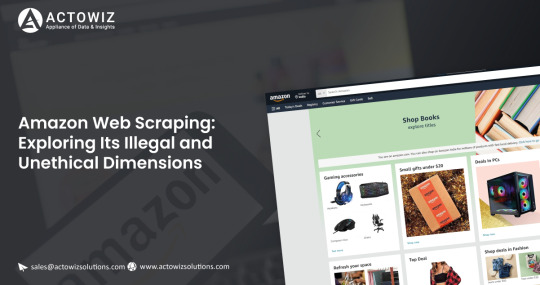
Discover the dark side of Amazon web scraping: Learn about its illegal and unethical aspects. Is it harming your business?
konw more: https://www.actowizsolutions.com/amazon-web-scraping-illegal-and-unethical-dimensions.php
#AmazonWebScraping#AmazonDataScraper#AmazonDataExtraction#ScrapeAmazonData#AmazonDataCollection#AmazonWebScraper
0 notes
Text
What Are Effective Solutions to Overcome Amazon Web Scraping Challenges?
Amazon web scraping challenges involve overcoming IP blocking, CAPTCHA hurdles, dynamic content handling, website structure changes, and legal compliance issues.
Know more: https://www.iwebdatascraping.com/effective-solutions-to-overcome-amazon-web-scraping-challenges.php
#AmazonWebScraping#ScrapeAmazonData#AmazonDataScraper#ExtractAmazonData#AmazonDataCollection#AmazonDataExtraction
0 notes
Text
How to Extract Amazon Reviews
In this guide, we embark on a journey to unravel the intricacies of Amazon review extraction, exploring the depths of coding methodologies and user-friendly no-code alternatives.
know more: https://medium.com/@ridz.2811/how-to-extract-amazon-reviews-navigating-code-and-no-code-solutions-f99be26c0a30
#AmazonReviewDataScraping#AmazonReviewDataScraper#ScrapeAmazonReviewAppsData#AmazonReviewDataExtraction#AmazonReviewAppsDataCollection#ExtractAmazonReviewsData#ScrapeAmazonData#AmazonDataExtraction
0 notes
Text

know more: https://www.mobileappscraping.com/extract-amazon-reviews.php
#AmazonReviewDataScraping#AmazonReviewDataScraper#ScrapeAmazonReviewAppsData#AmazonReviewDataExtraction#AmazonReviewAppsDataCollection#ExtractAmazonReviewsData#ScrapeAmazonData#AmazonDataExtraction
0 notes
Text
How to Extract Amazon Reviews: Navigating Code and No-Code Solutions

How to Extract Amazon Reviews: Navigating Code and No-Code Solutions
Oct 20, 2023
Introduction
In the dynamic landscape of e-commerce, Amazon reviews serve as invaluable sources of insights, influencing purchasing decisions and providing crucial feedback for both consumers and sellers. Extracting this wealth of information can be approached through two distinct avenues: code-based and no-code solutions. In this guide, we embark on a journey to unravel the intricacies of Amazon review extraction, exploring the depths of coding methodologies and user-friendly no-code alternatives.
Code-based solutions involve:
Leveraging programming languages like Python.
Utilizing tools like BeautifulSoup and Scrapy to navigate Amazon's web structure.
Programmatically fetching review data.
We'll delve into the intricacies of these scripts, providing step-by-step instructions to empower those with coding prowess.
For those seeking a more accessible route, no-code solutions offer a compelling alternative. Platforms like Mobile App Scraping provide intuitive interfaces for users with varying technical backgrounds to scrape Amazon reviews effortlessly. We'll navigate through these user-friendly tools, illustrating how anyone, regardless of coding expertise, can extract valuable insights from Amazon's extensive review database.
Whether you're a seasoned coder or a novice seeking simplicity, this guide equips you with the knowledge to extract Amazon reviews effectively, opening the door to a wealth of consumer sentiments and market intelligence.
Understanding The Basics
In e-commerce, scraping Amazon reviews has become a pivotal practice for businesses and consumers. Understanding the significance of this process is crucial for unlocking valuable insights that can shape purchasing decisions and refine product offerings.
Amazon reviews encompass a wealth of information, providing a multifaceted view of customer experiences. Firstly, product feedback serves as a direct line of communication from consumers to sellers, offering insights into the strengths and weaknesses of a product. Positive feedback highlights features that resonate with customers, acting as an endorsement for potential buyers. Conversely, negative feedback pinpoints areas of improvement and potential pain points that need addressing.
Ratings, another critical component of Amazon reviews, distill customer satisfaction into a numerical form. These aggregate scores offer a quick snapshot of a product's overall reception, aiding consumers in making informed choices amid a sea of options.
Beyond the quantitative aspects, customer sentiments expressed in reviews offer qualitative insights. Understanding the emotions and opinions of users provides businesses with a nuanced understanding of their audience, helping them tailor products and services to meet consumer expectations.
Scraping Amazon reviews unveils a treasure trove of information encompassing product performance, user satisfaction, and sentiments — insights instrumental in refining marketing strategies, enhancing product development, and ultimately fostering a symbiotic relationship between sellers and consumers.
Code Approach
Python and BeautifulSoup
Python, coupled with the BeautifulSoup library, forms a robust duo for web scraping, offering a powerful combination for extracting Amazon review data. Here's a step-by-step guide to help you navigate through the process:
Environment Setup
Begin by ensuring Python is installed on your system. You can install BeautifulSoup using pip:pip install beautifulsoup4
Library Installation

Amazon URL Retrieval

Parsing HTML
Utilize BeautifulSoup to parse the HTML content:soup = BeautifulSoup(response.text, 'html.parser')
Locating Review Elements
Inspect the HTML structure of the page to identify the elements containing review data. Use BeautifulSoup's methods to navigate through the document and locate these elements.
Data Extraction

Data Storage
Depending on your needs, store the extracted data in a suitable format, such as a CSV file or a database.
By following these steps, you can harness the power of Python and BeautifulSoup to scrape Amazon reviews efficiently, providing a foundation for insightful analysis and data-driven decision-making.
Scrapy Framework
The Scrapy framework stands out as a sophisticated and advanced option for scraping Amazon reviews, offering a comprehensive toolkit that streamlines the entire process. Unlike simple scripts, Scrapy provides a robust, extensible architecture specifically designed for web crawling and data extraction.
Installation and Project Initialization
Start by installing Scrapy using pip:pip install scrapy
Initiate a Scrapy project with the command:Initiate a Scrapy project with the command:
Spider Creation
Define a spider within the project to specify how to navigate and extract data from Amazon's pages. Scrapy's spider simplifies the process of traversing links, making it highly efficient for scraping multiple pages.
XPath and Selectors
Scrapy utilizes XPath selectors, offering a powerful and flexible way to navigate HTML and XML documents. This enables precise targeting of elements containing Amazon review data.
Item Pipelines
The framework incorporates item pipelines that facilitate the processing and storage of scraped data. Define custom pipelines to handle extracted Amazon review information seamlessly.
Concurrency and Speed
Scrapy is built for performance, employing asynchronous processing to enhance speed. This is particularly beneficial when scraping large volumes of data, such as extensive Amazon review pages.
Middleware and Extensions
Leverage Scrapy's middleware and extensions to implement custom functionalities and address specific challenges during the scraping process. This adaptability makes Scrapy well-suited for complex scraping scenarios.
Built-in Logging and Error Handling
Scrapy comes with built-in logging and error handling mechanisms, providing developers with insights into the scraping process and making it easier to troubleshoot issues.
By utilizing the Scrapy framework, developers can harness a powerful toolset to streamline the extraction of Amazon review data. Its advanced features and flexibility make it particularly effective for large-scale scraping projects, providing a solid foundation for extracting valuable insights from Amazon's diverse and dynamic review ecosystem.
No-Code Approach
Introduction to No-Code Tools

No-code tools have emerged as game-changers in web scraping, offering accessible and user-friendly solutions for individuals and businesses seeking to extract valuable data without coding expertise. One such tool in this paradigm is Mobile App Scraping, which empowers users to effortlessly scrape Amazon reviews and glean meaningful insights, all through an intuitive and code-free interface.
These no-code tools simplify the traditionally complex process of web scraping by replacing lines of code with visual elements and straightforward configurations. With Mobile App Scraping, users can navigate the Amazon review landscape seamlessly without writing a single line of code. The platform typically employs a visual workflow where users can specify the target data elements, define extraction rules, and set parameters with simple drag-and-drop actions.
Their democratizing effect on data extraction makes no-code tools like Mobile App Scraping genuinely revolutionary. Users with diverse backgrounds, including marketers, analysts, and business owners, can harness the power of web scraping without needing intricate coding skills. This democratization ensures that the benefits of Amazon review scraping, including enhanced market insights and competitive analysis, are accessible to a broader audience, fostering a more inclusive and data-driven landscape.
Using Mobile App Scraping

Using Mobile App Scraping for Amazon review scraping is a straightforward process that empowers users to extract valuable insights without delving into complex coding. Follow this walkthrough to navigate through the steps seamlessly:
Setting Up the Workflow
Launch Mobile App Scraping and create a new project.
Choose the target platform (in this case, Amazon) and specify the type of data you want to scrape (Amazon reviews).
Configuring Data Extraction
Enter the Amazon product page URL from which you wish to extract reviews.
Use the visual interface to identify and select the elements containing review data, such as user comments, ratings, and timestamps.
Configure extraction rules by simply dragging and dropping elements onto the workflow canvas.
Handling Pagination (if necessary)
If Amazon reviews span multiple pages, configure pagination settings to ensure the tool navigates through all relevant pages.
Mobile App Scraping typically provides an intuitive way to handle pagination, allowing users to set up automated workflows for seamless data extraction.
Running the Extraction
Execute the workflow to initiate the scraping process.
Observe Mobile App Scraping as it automatically navigates through the specified pages, extracting the defined data elements.
Exporting Results
Once the scraping is complete, export the results in your preferred format, such as CSV or Excel.
Mobile App Scraping often offers straightforward export options, ensuring that the extracted Amazon review data is readily available for further analysis.
By following these steps, users can leverage the power of Mobile App Scraping to efficiently and effortlessly scrape Amazon reviews, gaining actionable insights to inform business strategies and decision-making. The no-code approach ensures accessibility for users with varying technical backgrounds, making the process inclusive and user-friendly.
Best Practices And Ethical Considerations
Best Practices and Ethical Considerations in web scraping are critical to ensure responsible and lawful data extraction. Adhering to ethical standards promotes a positive reputation and helps maintain a fair and open internet ecosystem. Here are key considerations:
Respect Website Terms of Service
Continually review and comply with the terms of service of the website you're scraping, including Amazon. Websites may have specific rules regarding automated access and data extraction.
Avoid Excessive Requests
Implement rate-limiting to avoid overwhelming the target website's servers with too many requests. Excessive requests can lead to server strain and potential service disruptions.
Use Robots.txt
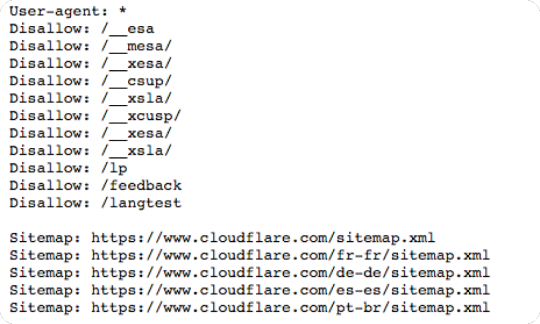
Check for and respect the guidelines outlined in a website's robots.txt file. This file often indicates which parts of the site are off-limits for web crawlers or scrapers.
User-Agent Identification
Identify your scraper through a user-agent string. This allows website administrators to understand the source of the requests and facilitates communication if issues arise.
Data Privacy
Do not scrape sensitive personal information without explicit consent. Respect user privacy by avoiding data extraction that could lead to the identification of individuals.
Abide by Legal Guidelines
Please familiarize yourself with the legal landscape surrounding web scraping, as it can vary by jurisdiction. Some websites explicitly prohibit scraping in their terms of service, while others may have legal precedents protecting their data.
Monitor Changes
Regularly check the target website for any changes in its structure or terms of service. Adjust your scraping practices accordingly to maintain compliance.
Handle Cookies Responsibly
If your scraping involves handling cookies, ensure you comply with applicable data protection laws. Be transparent about cookie usage and offer users the option to opt-out.
Provide Attribution
If applicable, give proper attribution to the source website when using scraped data. This helps maintain transparency and acknowledges the efforts of the original content creators.
Be Mindful of Impact
Avoid scraping data in a way that could negatively impact the performance or functionality of the target website. Responsible scraping should not disrupt the user experience for others.
By adhering to these best practices and ethical considerations, web scrapers can contribute to a responsible and sustainable online environment while still extracting valuable data for legitimate purposes.
Challenges And Solutions
Like any web scraping endeavor, Amazon review scraping comes with its challenges. Addressing these challenges is crucial for a successful and sustainable scraping process. Here are common challenges and solutions:
Dynamic Content
Challenge: Amazon pages often load dynamic content, making capturing all relevant data challenging.
Solution: Use tools or libraries that handle dynamic content, such as Selenium. Simulate user interactions to ensure all elements are loaded before scraping.
CAPTCHA Challenges
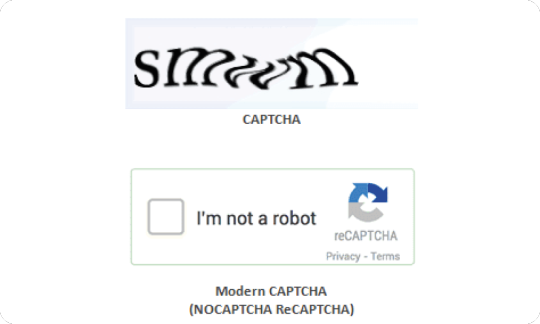
Challenge: CAPTCHA mechanisms can hinder automated scraping by requiring human verification.
Solution: Implement tools that can handle CAPTCHAs, or consider using headless browsers with user emulation to bypass CAPTCHA checks.
Anti-Scraping Measures
Challenge: Websites like Amazon may employ anti-scraping measures to detect and block automated bots.
Solution: Rotate IP addresses, use proxies, and employ random delays between requests to mimic human-like behavior and avoid detection.
Changes in Website Structure
Challenge: Amazon frequently updates its website structure, leading to broken scrapers.
Solution: Regularly monitor and update your scraping script to accommodate changes in the website structure. Use version control to track changes over time.
Pagination Handling
Challenge: Amazon reviews are often paginated, making scraping beyond the first page challenging.
Solution: Implement logic to handle pagination. Extract and follow links to subsequent pages systematically to collect a comprehensive dataset.
IP Blocking
Challenge: Amazon may block or limit access from specific IP addresses if it detects scraping activity.
Solution: Use a pool of rotating IP addresses or proxies to prevent IP blocking. Employ IP rotation strategies to avoid raising suspicion.
Legal and Ethical Concerns
Challenge: There are legal and ethical considerations when scraping data from Amazon.
Solution: Adhere to Amazon's terms of service, respect website policies, and ensure compliance with relevant laws. Scraping should be conducted responsibly and ethically.
Handling Large Datasets
Challenge: Scraping many reviews can result in a massive, challenging dataset.
Solution: Implement efficient data storage methods, such as databases, and consider limiting the number of reviews to scrape based on project needs.
Bypassing Rate Limits
Challenge: Websites may have rate limits to prevent abuse, leading to blocked access.
Solution: Implement a rate-limiting strategy to ensure your scraper makes only a few requests in a short period. Respect the site's guidelines to avoid being blocked.
By proactively addressing these challenges with appropriate solutions, your Amazon review scraping efforts can remain effective, resilient, and aligned with ethical and legal standards. Regular monitoring and adaptation to changes in the web landscape are vital to maintaining a successful scraping workflow.
Conclusion
Whether you opt for a code-based or a no-code approach, scraping Amazon reviews offers a gateway to a wealth of valuable insights. Code-based methodologies, exemplified by Python and BeautifulSoup or the advanced Scrapy framework, provide powerful customization for those with coding expertise. On the other hand, no-code tools like Mobile App Scraping offer a simplified, accessible alternative, enabling users to extract Amazon review data without programming skills effortlessly.
The critical takeaway is to choose the method that aligns with your technical expertise and project requirements. The code-based route may be suitable if you're well-versed in coding and require intricate customization. Alternatively, if simplicity and accessibility are paramount, no-code tools offer a user-friendly avenue for data extraction.
Embrace the vast opportunities that Amazon review data presents for informed decision-making. Whether you're a developer, marketer, or business owner, unlocking the insights within Amazon reviews can empower you to refine strategies, enhance products, and gain a competitive edge.
Explore the possibilities with Mobile App Scraping, offering an intuitive no-code solution. Seize the opportunity to effortlessly scrape Amazon reviews, gain actionable insights, and make informed decisions. Empower your projects with Mobile App Scraping today and embark on a journey of data-driven success.
know more: https://www.mobileappscraping.com/extract-amazon-reviews.php
#AmazonReviewDataScraping#AmazonReviewDataScraper#ScrapeAmazonReviewAppsData#AmazonReviewDataExtraction#AmazonReviewAppsDataCollection#ExtractAmazonReviewsData#ScrapeAmazonData#AmazonDataExtraction
0 notes
Text
How to Extract Amazon Reviews: Navigating Code and No-Code Solutions
In this guide, we embark on a journey to unravel the intricacies of Amazon review extraction, exploring the depths of coding methodologies and user-friendly no-code alternatives.
know more: https://www.mobileappscraping.com/extract-amazon-reviews.php
#AmazonReviewDataScraping#AmazonReviewDataScraper#ScrapeAmazonReviewAppsData#AmazonReviewDataExtraction#AmazonReviewAppsDataCollection#ExtractAmazonReviewsData#ScrapeAmazonData#AmazonDataExtraction
0 notes
Text

Scrape Amazon App Product Data | Amazon App Data Collection
know more: https://www.mobileappscraping.com/scrape-amazon-app-data.php
#AmazonAppDataScraping#ScrapeAmazonProductData#Amazonappdatacollection#AmazonProductDataScraper#AmazonDataExtraction#AmazonMobileAppScraping
0 notes
Text
Scrape Amazon App Product Data | Amazon App Data Collection
Get a competitive advantage with our powerful Amazon app data collection service. Unlock valuable insights and uncover hidden trends by scraping Amazon app product data.
know more: https://www.mobileappscraping.com/scrape-amazon-app-data.php
#AmazonAppDataScraping#ScrapeAmazonProductData#Amazonappdatacollection#AmazonProductDataScraper#AmazonDataExtraction#AmazonMobileAppScraping
0 notes
Text
Amazon Web Scraping: Exploring Its Illegal and Unethical Dimensions
Discover the dark side of Amazon web scraping: Learn about its illegal and unethical aspects. Is it harming your business?
konw more: https://www.actowizsolutions.com/amazon-web-scraping-illegal-and-unethical-dimensions.php
0 notes